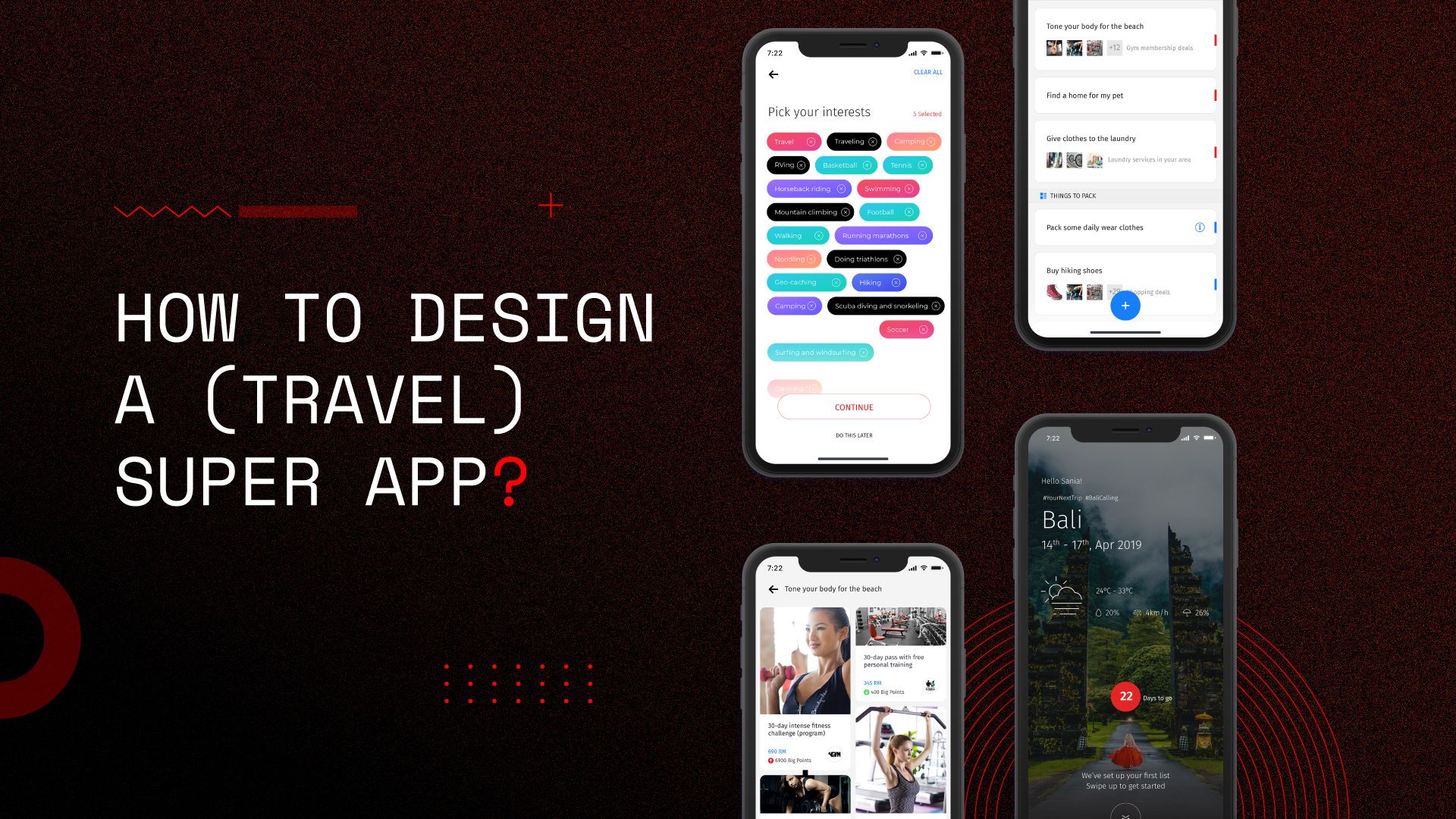Designing a super app: From product & data perspective.
The problem statement was to fix exactly that — How can the parent airline company combine all the internal initiatives and external entities to create a single product, a super app to build collective immersive user experience for the end-users?

Problem Statement:
One of the biggest airlines in Southeast Asia had a new vision. A vision for a better future. A vision to be recognized as a digital-first enterprise rather than the present image of just a travel enterprise. To further this vision, the airline has started a few internal digital initiatives and acquired some external digital product companies. However, the sum of all parts was falling short of the individual entities involved.
The problem statement was to fix exactly that — How can the parent airline company combine all the internal initiatives and external entities to create a single product, a super app to build collective immersive user experience for the end-users?
Project Goals:
- Evaluate the current products & initiatives (internal and external) to find a common thread(System Thinking).
- Recommend what to keep and what not to keep among the products and their respective features using (Lean Principles).
- Propose a future vision for the super app with a strong platform at the core (Design Thinking + Platform Thinking).
- Carve out a thin slice MVP from the vision and propose a thin slice delivery plan to go to market soon (Agile Delivery).
- Build a step-by-step roadmap to achieve the complete vision for the super app (System Thinking + Agile Continuous Delivery).

What is a super app?
By definition, a "Super app is a closed eco-system of many apps”. However, no super app has ever started being a super-app first, it starts small and then evolves. Evolution is critical for a super app to become a super app. If an app starts as a super-app in the beginning then it is doomed to fail because the market becomes too broad to slice and understand needs accurately; resulting in a product-market misfit and ultimately failure. None of the successful super-apps, take WeChat, Go-Jek or Grab for example have started as a super-app. They all have a successful core business at the center and this is where the thin-slicing becomes extremely crucial.
My approach & macro plan for the workshop
- Current State Discovery:
Study the current products based on the data generated so far, understand what’s working, what’s not and why? Identify the common connecting thread between these products; all of them if possible, if not, at least most of them. Identify a target market from the data and filter it down to the most viable niche market. - Defining the future vision:
Conduct a blue-sky visioning workshop with the stakeholders and arrive at the grand vision for the super app. - Carving a thin slice and testing:
Start with the persona, build the experience maps and relevant user journeys to understand and explore the target market. Carve out the thin slice candidate for the MVP, the goal is to get to product-market fit first. Dive into the experimentation framework, build a quick prototype, test the hypothesis and core assumptions and gather qualitative and quantitative data. Apply learnings from the prototype to tweak the thin slice or even the vision. - Build strategic roadmap to achieve the vision:
Take the learnings and reality from the thin slice experiment and use modified version of Itamar Gilad’s planning model to arrive at the roadmap to build a super app.

Current State Discovery:
One of the commonalities that I’ve noticed in all my workshops is that companies have more data than they know what to do with. Did you know, global computer usage generates over 2.5 quintillion bytes of data every day? Enterprises around the world collect an incomprehensible amount of data but only a very few of them sift through their data and translate to meaningful actions that can benefit end-users.
Whenever data is available I almost always invariably start my workshop with data sifting exercise. Sifting through datasets to understand customer behavior is fun. The right type of customer data can also help to get to product-market fit earlier and for mature products, it can help to break into next growth orbits. increase efficiency and reduce waste, both of which can increase your revenue.

Understanding the market:
The meaning for the word “Market” here means — a bunch of people with a common pain. The data sifting exercise in the previous step pointed me in a market direction. Charged with this information I proceeded to confirm my qualitative findings with some qualitative data. When both qualitative and quantitative data pointed me in the same direction I started to slice my market further into finding the sweet niche.

Prototyping learning & thin slice carving:
So far, all the activities of the workshop are done to understand business, users and potential customers. All the possible solutions and even understandings at this stage are based on the hypothesis. The real validation happens when customers agree with your hypothesis. This is the stage where divergent thinking generates ideas and then convergent thinking narrows them to give you the most promising ones.
In this case, I had to calculate the ROI for each idea to further narrow down options and picked a unanimous winner. When we have the winner, then building a quick prototype of the idea and validating it with the customers as our prime focus.
An intelligent recommendation engine at product's core:
One of the points that strongly came out during the validation stage is a necessity for an intelligent recommendation engine. Customers have indirectly indicated how they would like to receive recommendations based on their lifestyle which would encourage them to use and keep such an app on their phones all the time. This insight led us to prioritize and build a strong intelligent recommendation engine at the core of the product with eco-system and platform thinking to support the stage-wise road-map later on. I have defined the logic for such an engine and wrote a detailed post on what it means to build such an engine in today’s world of AI and ML.

The super app grand vision:
Once the validation was done and approved by the customers the next step was to define the epidermis of the product, a strong design language to build the experience on. A great user experience may lead users to what psychologists call a “flow” state, where a user is completely immersed in using the product.
There are various aspects of getting this experience design right — First, it starts with the persona, get it right! Then on one side, you have the information architecture, the flows, the journeys, and the UX laws and principles and on the other side, you have the colors, unity, contrasts, typography, graphics, illustrations, grids, balance, space, and style guides. Find the right balance of these components and you will have a great user experience that can put the users in a flow state.



